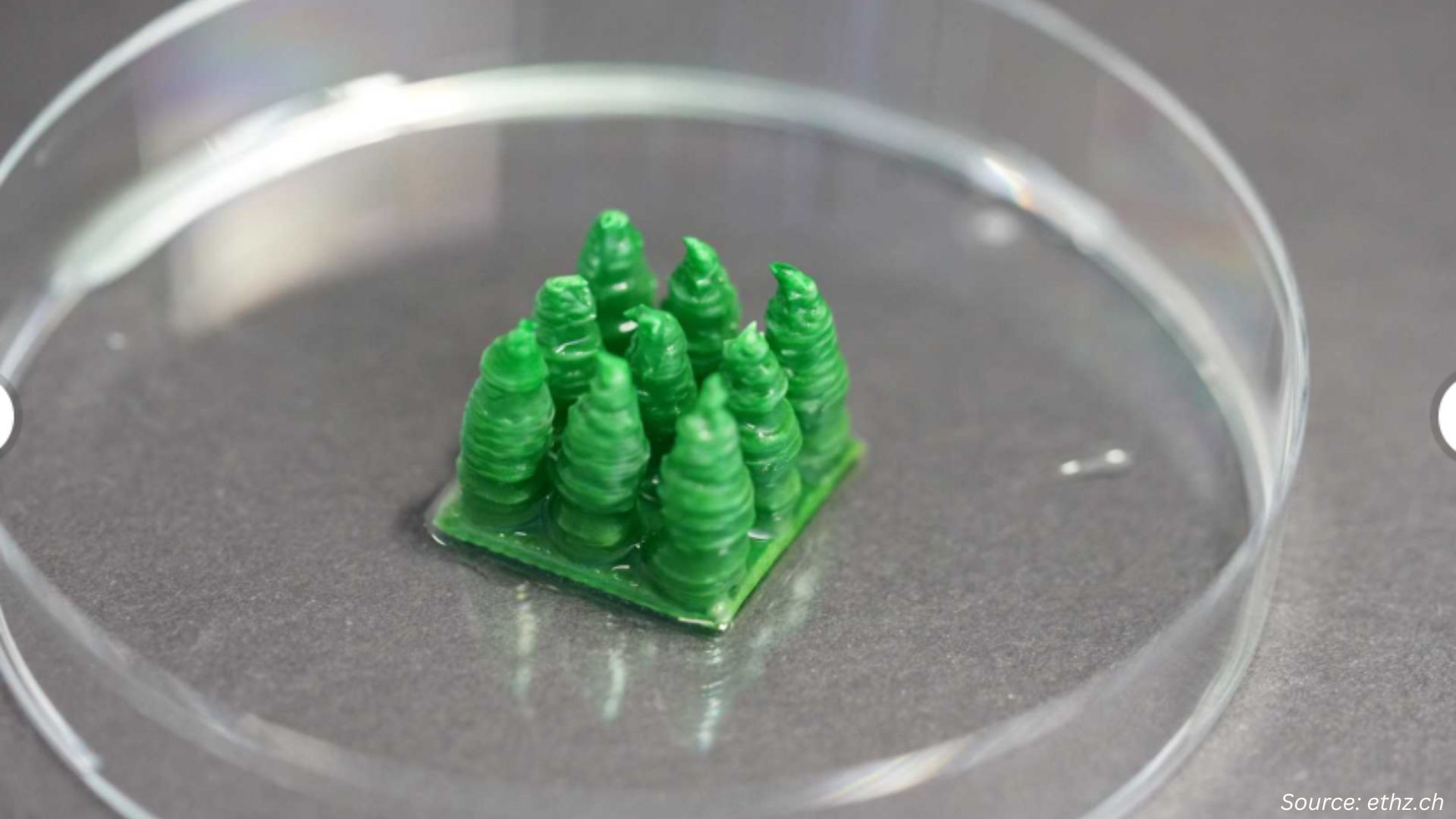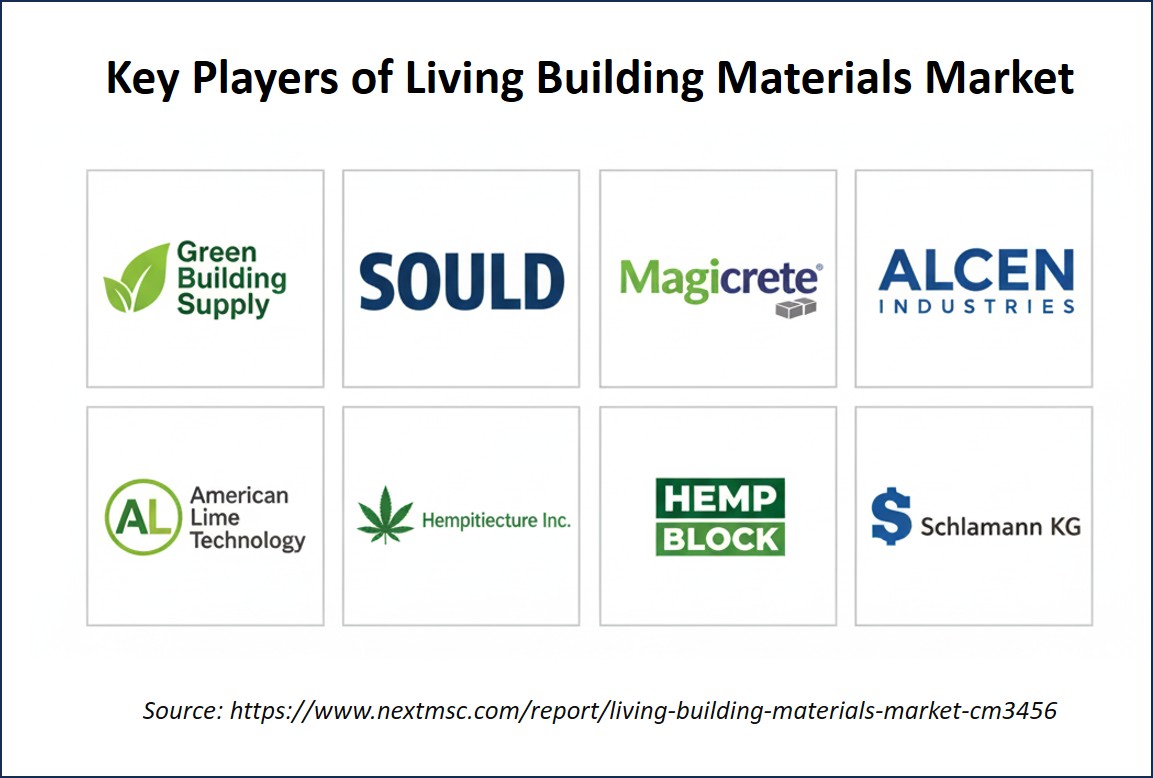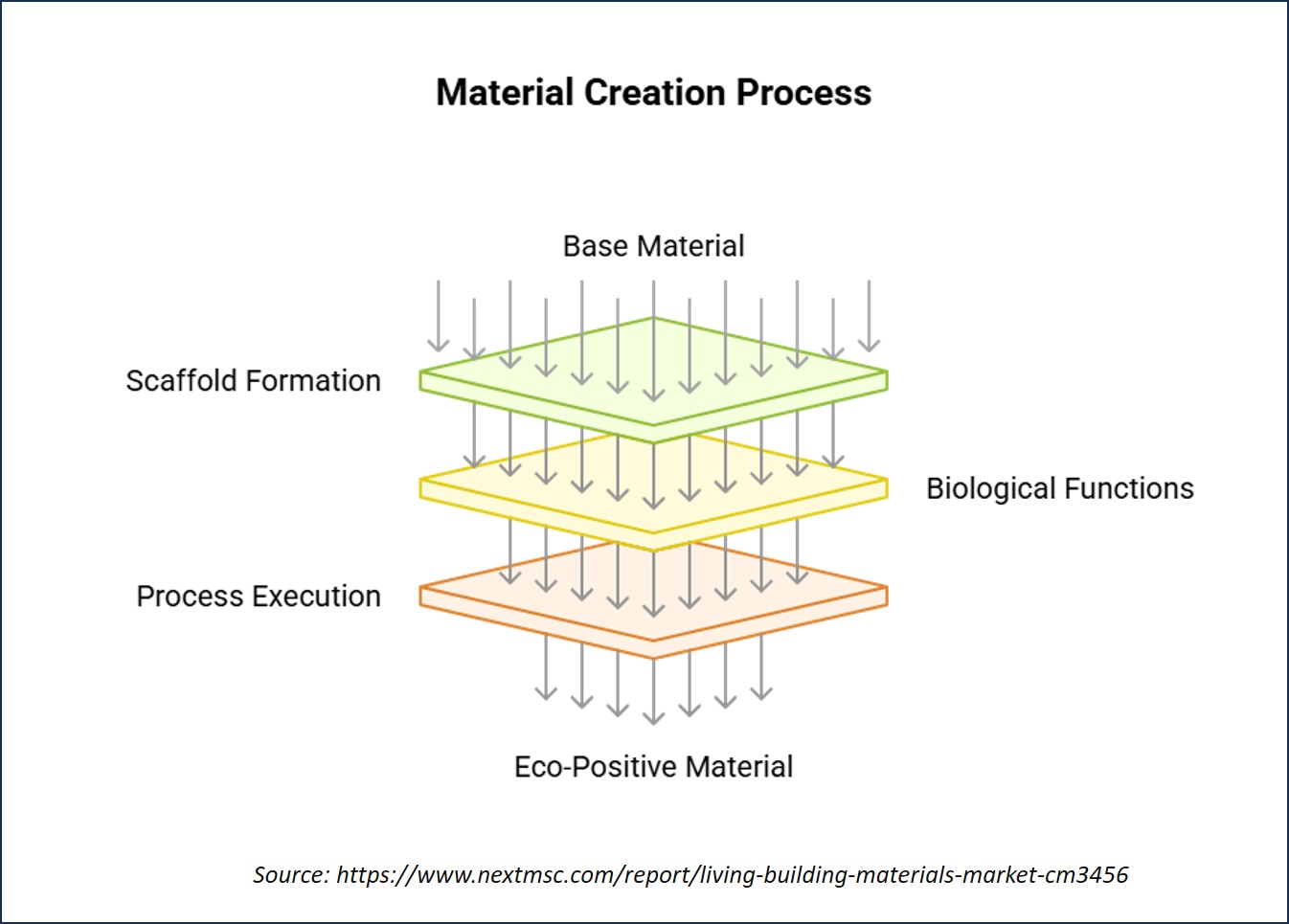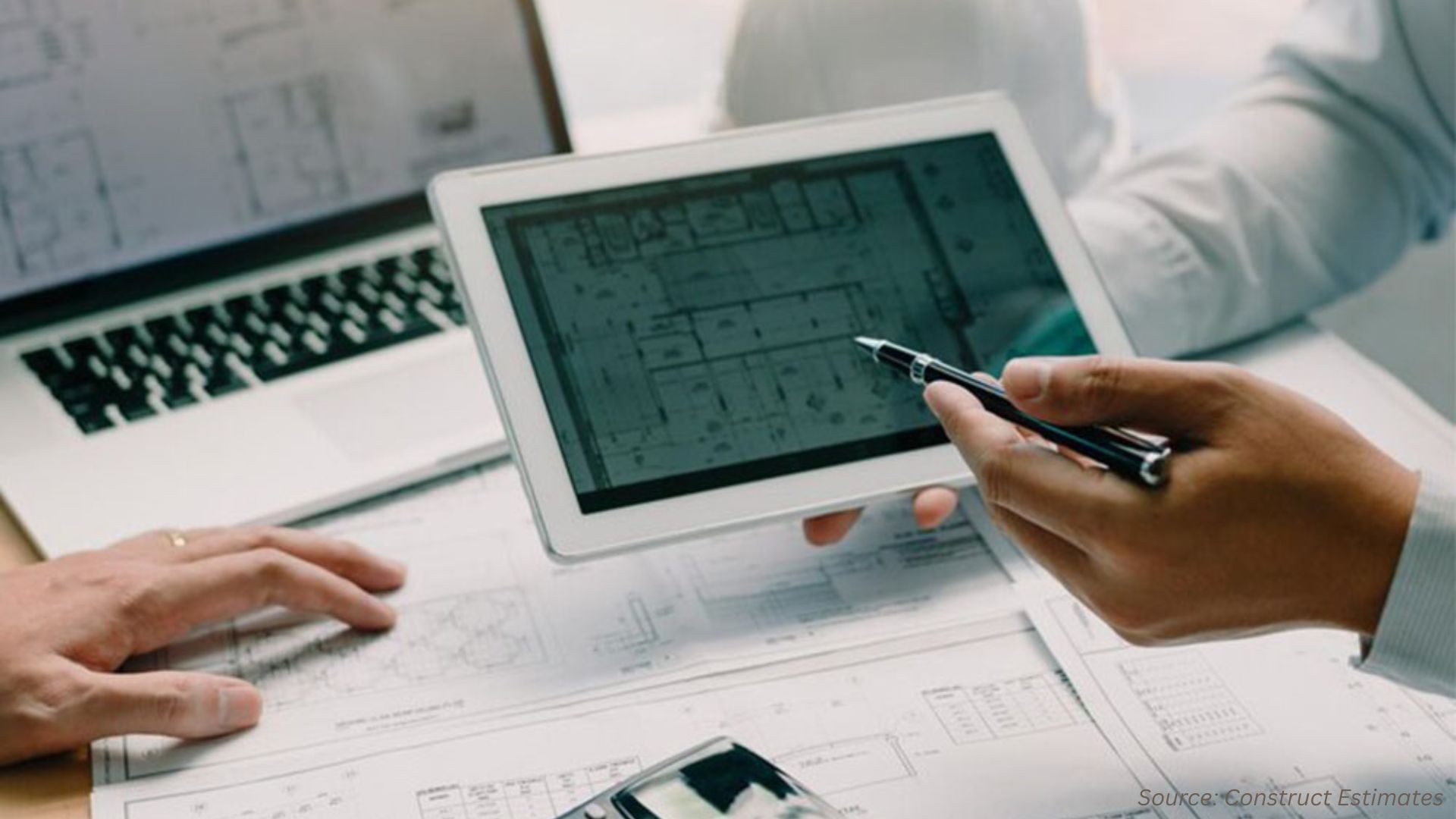Living Building Materials: What’s Driving the Growth?
Published: 2025-11-11

As global industries aim to reduce emissions, a new class of construction materials is emerging Living Building Materials (LBMs). These materials are made by combining living organisms like bacteria, fungi, or algae with structural substances, creating components that can repair themselves, store carbon, and even grow over time. Recent scientific breakthroughs are moving these innovations from lab experiments to real-world applications.
How are Living Building Materials Created?
Scientists are developing living materials by blending biology and engineering. According to Smithsonian Magazine, researchers have combined mycelium (the root-like structure of fungi) with bacteria (Sporosarcina pasteurii) that can create calcium carbonate, the same mineral found in limestone.
This fusion forms a scaffolded material capable of growing and repairing itself while maintaining structural integrity. The living bacteria in these materials can survive for over a month, significantly longer than earlier versions that remained alive for just days or weeks.
This innovation builds upon the concept of biomineralization, a process where living organisms naturally form minerals. In these materials, fungi provide a strong and porous framework, while bacteria act as microscopic builders, filling cracks and producing mineral deposits that enhance strength and longevity.
What Makes Carbon-Storing Building Materials a Game Changer?
A team from ETH Zurich developed a 3D-printable hydrogel that embeds photosynthetic cyanobacteria capable of capturing and storing carbon dioxide from the atmosphere. These microorganisms convert CO₂ into biomass and carbonate minerals, meaning the material not only avoids emissions but actively removes carbon from the air.
Unlike traditional concrete, which emits nearly 500 g of CO₂ per kilogram, this carbon-storing biomaterial has the potential to sequester around 350 g of CO₂ per kilogram. A 150-square-meter wall made from this material could absorb approximately one tonne of carbon dioxide, making it a net carbon sink rather than a source.
These materials demonstrate how construction could shift from being a major carbon emitter to an active climate solution, aligning with the world’s net-zero goals.
How are Indian Innovators Contributing to the Living Building Materials Landscape?
India is also making notable progress in this emerging field. As reported by The Indian Express, an Indian student researcher developed a carbon-capturing biomaterial capable of absorbing atmospheric CO₂ while being biodegradable and cost-effective.
This student’s innovation demonstrates that sustainable materials can be locally sourced and affordable, opening doors for developing nations to adopt carbon-neutral construction. The material, which uses biological and mineral elements, shows promising durability while maintaining eco-friendly performance.
Such grassroots innovation reflects India’s growing role in the global green materials ecosystem, where affordability and environmental sustainability go hand in hand.
Who are the Key Players Driving the Living Building Materials Market?
Leading companies are playing a pivotal role in advancing the Living Building Materials Market by developing eco-friendly and biologically inspired construction solutions. Green Building Supply promotes sustainable product distribution with a focus on low-impact materials, while Sould integrates regenerative design and biological growth into construction. Magicrete delivers lightweight, energy-efficient building materials that align with modern sustainability goals. Alcen Industries invests in next-generation technologies combining environmental performance and scalability. American Lime Technology and Hempitecture Inc. are at the forefront of hemp- and lime-based innovations that enhance thermal performance and carbon storage. Meanwhile, Hemp Block provides modular hempcrete systems for breathable, efficient walls, and Schlamann KG supports eco-optimized material solutions that strengthen circular construction practices. Together, these key players are redefining how buildings are designed, built, and sustained in a climate-conscious world.
What are the Key Challenges Limiting Large-Scale Adoption?
Despite their promise, living building materials face several technical and commercial challenges before large-scale adoption:
-
Structural Strength: Most living materials are not yet as strong as concrete, limiting use in high-load structures.
-
Longevity: Keeping micro-organisms alive and active over years, not just months, remains difficult.
-
Cost and Manufacturing: Scaling up bio-based production processes is expensive and time-consuming.
-
Regulatory Hurdles: Building codes and certifications do not yet have standards for living or biologically active materials.
As researchers improve strength, viability, and cost-effectiveness, these materials could become more practical for commercial use.
Where Could the Living Building Materials Market Grow Next?
The initial market potential for living materials lies in non-load-bearing applications, such as:
-
Interior and exterior wall panels
-
Acoustic insulation and façade design
-
Architectural installations and eco-art projects
ETH Zurich’s prototypes have already been displayed in architecture exhibitions, showing how designers are beginning to adopt these materials for creative, functional use cases.
These early applications will pave the way for more industrial-scale adoption, particularly as cities and developers aim to meet sustainability goals and lower embodied carbon footprints.
How do Living Building Materials Work?
Living building materials blend biology and engineering to create structures that can heal, grow, and store carbon. The process begins with a base such as mycelium or hydrogel, which acts as a scaffold to provide shape and support. Into this framework, scientists introduce living organisms like bacteria or cyanobacteria that perform essential biological functions. Through processes such as biomineralization or photosynthesis, these organisms produce calcium carbonate or biomass, reinforcing the structure while capturing carbon. The result is a self-healing, carbon-storing, and eco-positive material that makes buildings behave more like living systems than static structures.
Why are Living Building Materials Important for Sustainable Architecture?
Traditional building materials like cement and steel are responsible for over 8% of global CO₂ emissions, primarily due to energy-intensive production. Living materials, in contrast, work with nature rather than against it. They regenerate, heal, and absorb carbon, all while reducing waste and pollution.
Architects and engineers are increasingly looking for materials that balance performance, aesthetics, and environmental impact. Living materials tick all these boxes, offering potential for circular construction systems where waste is minimized, and buildings behave more like ecosystems than static structures.
Next Steps: What Should Industry Stakeholders Focus on?
For the Living Building Materials Market to progress from lab to large-scale construction, collaboration between scientists, architects, and policymakers is crucial.
Here are key next steps for stakeholders:
-
Invest in R&D: Focus on enhancing material strength, longevity, and reproducibility.
-
Pilot Projects: Support real-world demonstration buildings using LBMs to validate performance data.
-
Develop Standards: Create new certifications for biologically active materials to ensure safety and compliance.
-
Encourage Public Awareness: Educate architects and builders about the environmental and economic benefits of LBMs.
-
Foster Global Collaboration: Connect research institutions across regions to share data and accelerate innovation.
Next Move Strategy Consulting View
Next Move Strategy Consulting sees living building materials (LBMs) as a breakthrough that redefines the foundation of sustainable architecture. These innovations ranging from self-healing fungal composites to carbon-storing cyanobacteria panels are not just scientific milestones; they represent a fundamental shift in how buildings interact with the environment.
As global sustainability targets tighten, LBMs could help construction evolve from a carbon-intensive industry into a climate-positive ecosystem. By integrating biological processes into materials, future structures may not only reduce emissions but actively capture carbon and regenerate over time.
These transformative potential positions the living building materials market as a key growth frontier for companies seeking long-term, eco-driven innovation and investment opportunities.
About the Author
 Joydeep Dey is a passionate digital explorer driven by creativity, strategy, and learning. He has worked in SEO, content creation, and video editing, combining analytical and creative skills to bring ideas to life. He has explored how AI tools and emerging tech transformed digital storytelling and productivity. Guided by curiosity he believes success lies not just in results but in learning something new every day. He continues to evolve with every project, striving to inspire through innovation and impact. His journey reflects a mindset of progress and purpose.
Joydeep Dey is a passionate digital explorer driven by creativity, strategy, and learning. He has worked in SEO, content creation, and video editing, combining analytical and creative skills to bring ideas to life. He has explored how AI tools and emerging tech transformed digital storytelling and productivity. Guided by curiosity he believes success lies not just in results but in learning something new every day. He continues to evolve with every project, striving to inspire through innovation and impact. His journey reflects a mindset of progress and purpose.
About the Reviewer
 Debashree Dey is a versatile Content Writer, PR Specialist, and Assistant Manager in Digital Marketing, known for her ability to craft audience-focused narratives and develop data-driven strategies that enhance brand visibility. As a published manuscript author, she combines creativity
with strategic acumen to help brands strengthen their presence and drive deeper user engagement. Outside of her professional pursuits, Debashree draws inspiration from creative projects and design explorations.
Debashree Dey is a versatile Content Writer, PR Specialist, and Assistant Manager in Digital Marketing, known for her ability to craft audience-focused narratives and develop data-driven strategies that enhance brand visibility. As a published manuscript author, she combines creativity
with strategic acumen to help brands strengthen their presence and drive deeper user engagement. Outside of her professional pursuits, Debashree draws inspiration from creative projects and design explorations.


















Add Comment